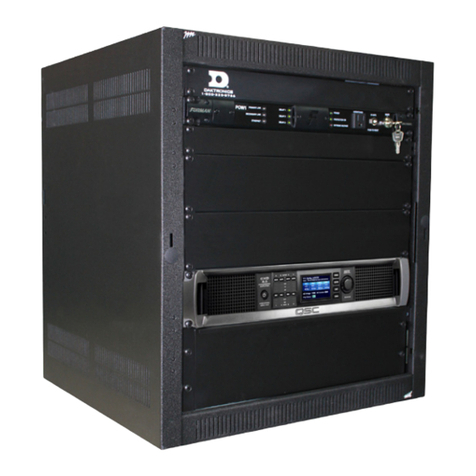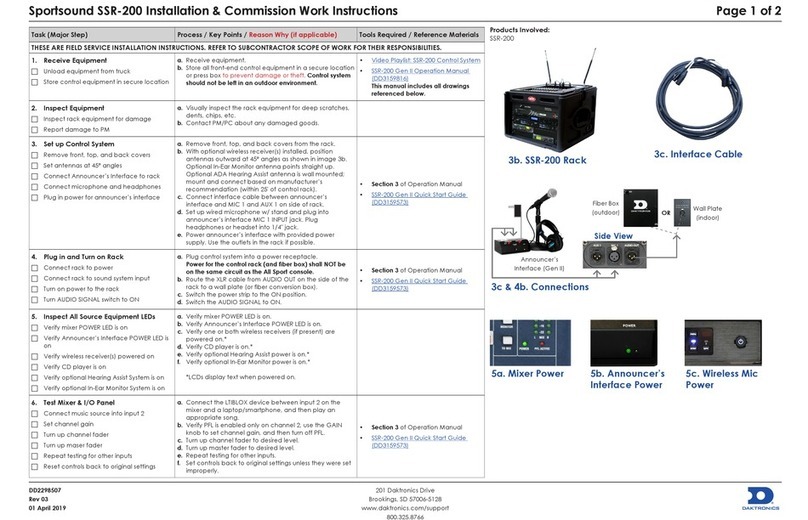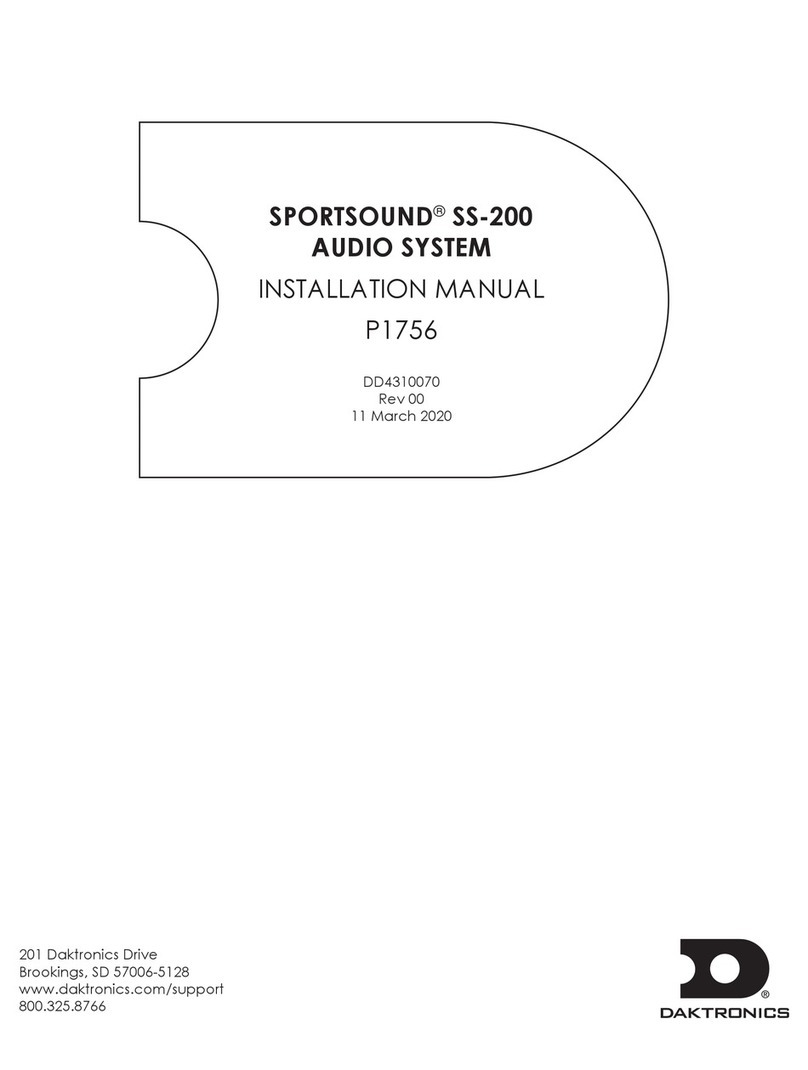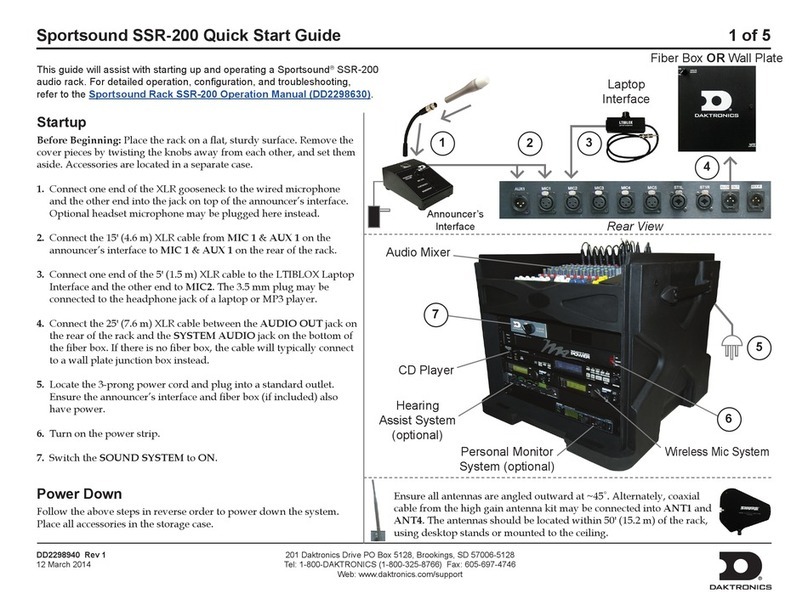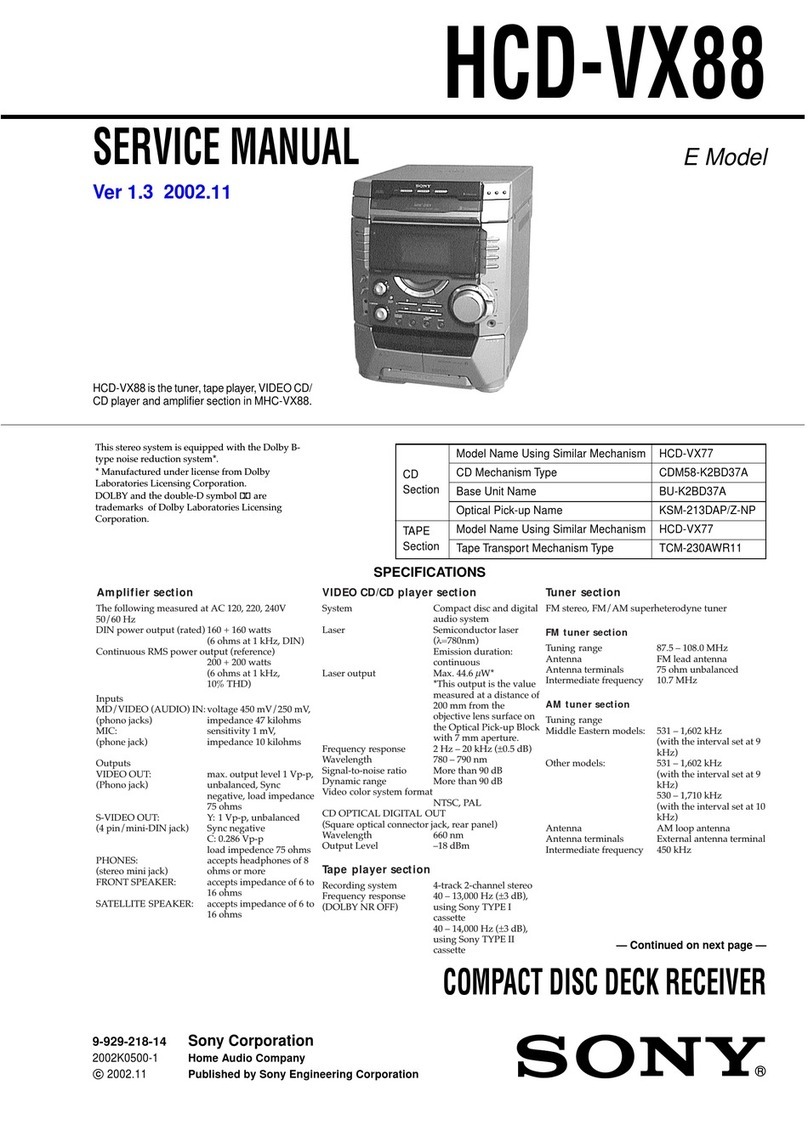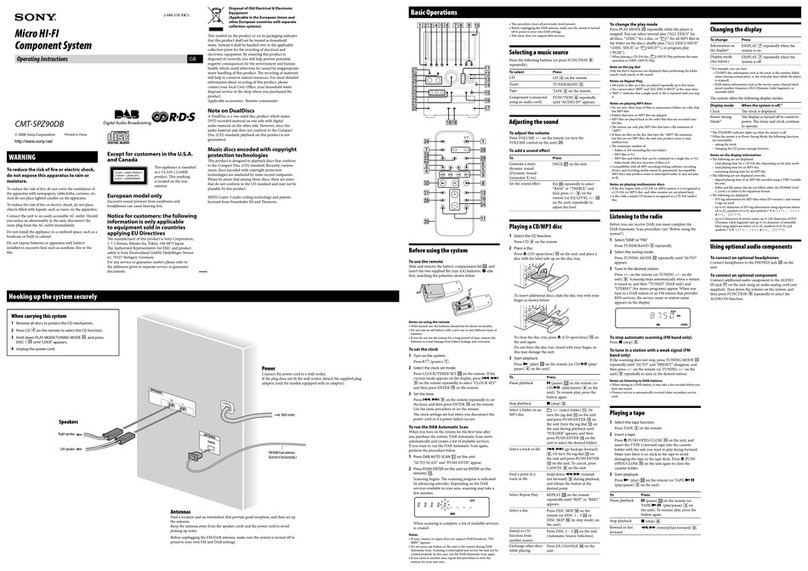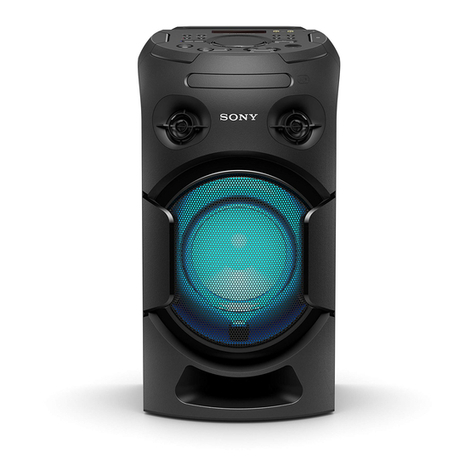
Table of Contents i
Table of Contents
Section 1: Introduction ................................................................................................................. 1
1.1 Resources..................................................................................................................................1
1.2 Daktronics Nomenclature......................................................................................................2
1.3 Product Safety Approval .......................................................................................................2
Section 2: Sound System Components ........................................................................................ 3
2.1 Equipment Overview .............................................................................................................3
2.2 Sound Cabinet .........................................................................................................................3
Grille ..................................................................................................................................3
Drivers...............................................................................................................................3
Amplifier Components ...................................................................................................4
2.3 Fiber Conversion Box .............................................................................................................4
2.4 Source Equipment...................................................................................................................4
2.5 Signal Cables............................................................................................................................4
Section 3: Mechanical Installation............................................................................................... 5
3.1 Cabinet Installation.................................................................................................................5
Lifting the Cabinet ...........................................................................................................5
Mounting the Cabinet .....................................................................................................6
Aiming the Speakers .......................................................................................................6
Section 4: Electrical Installation................................................................................................... 7
4.1 Power/Signal Connections....................................................................................................7
Power.................................................................................................................................8
Signal .................................................................................................................................9
Grounding.........................................................................................................................9
4.2 Lightning Protection...............................................................................................................9
4.3 Fiber Conversion Box Connections ......................................................................................9
Section 5: Maintenance & Troubleshooting.............................................................................. 11
5.1 Maintenance...........................................................................................................................11
Grille Maintenance and Cleaning ................................................................................11
Replacing the Grille Mesh ............................................................................................11
5.2 Troubleshooting ....................................................................................................................14
Indicator Lights ..............................................................................................................15
Announcer’s Rack...................................................................................................15
Fiber Conversion Box .............................................................................................15
Section 6: Replacement Parts ..................................................................................................... 17
6.1 Sound Cabinet .......................................................................................................................17
6.2 Fiber Conversion Box ...........................................................................................................17
Section 7: Daktronics Exchange and Repair & Return Programs ............................................. 19
7.1 Exchange Program ................................................................................................................19
Before Contacting Daktronics ......................................................................................19

